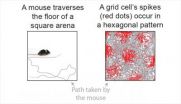(Press-News.org) For patients with bone and soft tissue tumours, the study data currently available allow no robust conclusions as to the advantages and disadvantages of using positron emission tomography (PET), alone or in combination with computed tomography (CT). This is because no studies have directly compared the benefit of these imaging techniques with conventional diagnostics. And the few available studies on diagnostic accuracy do not show any relevant differences. This is the conclusion of the final report of the German Institute for Quality and Efficiency in Health Care (IQWiG) published on 15th February 2013.
More reliable diagnosis ought to improve treatment
Bone and soft tissue tumours are rare diseases of the musculoskeletal system and soft tissue. Malignant types are particularly rare; they only represent a relatively small proportion of all cancers. Soft tissue tumours arise from different types of connective tissue, e.g. fibrous or fat tissue. They are responsible for about one per cent of cancer deaths in Germany each year. The proportion of bone tumours is lower.
Many experts hope that an examination using PET or PET/CT alone or in combination with other methods is better able to distinguish between benign and malignant tumours (primary diagnostics). PET is used to help classify the stage of the tumours correctly (primary staging) and better assess whether they respond to therapy (restaging). Experts also hope that PET or PET/CT helps them find out earlier, and with greater certainty, whether a recurrence has occurred or a secondary tumour (metastasis) has developed. This information should help them give better treatment recommendations to patients.
Benefit for patients crucial
IQWiG therefore searched the international literature for studies that had examined the consequences of a diagnostic intervention using PET or PET/CT on health aspects of direct relevance to patients. For example, the test results - and appropriately tailored treatment - could contribute to better chances of survival for patients, spare them unnecessary treatment or further diagnostic interventions, or improve their quality of life. However, the search for such studies was unsuccessful, so the question as to the patient-relevant benefit of PET or PET/CT in bone and soft tissue tumours had to remain unanswered.
Available studies are very small and susceptible to bias
In addition, IQWiG searched for studies that had assessed the diagnostic and prognostic accuracy, i.e. the accuracy of diagnosis and the power to predict the course of disease, of PET or PET/CT or that had compared PET or PET/CT and other testing methods regarding these criteria. The basic question is how often an investigation gives a correct result. On the one hand, it should overlook true tumours as rarely as possible, but on the other, it should raise false suspicions as rarely as possible.
IQWiG evaluated the results of a total of 32 individual studies on this topic. However, most of these studies only included few participants and were also susceptible to bias, so their results are subject to great uncertainty.
Eight of these studies compared PET or PET/CT with conventional imaging techniques (MRI, X-ray, CT). However, none of these 8 studies found the diagnostic accuracy of PET or PET/CT to be statistically significantly higher than conventional techniques. No prognostic accuracy studies comparing PET or PET/CT with conventional techniques were found.
So the possible benefit of PET or PET/CT in comparison with conventional techniques remains unclear.
Process of report production
IQWiG published the preliminary results in the form of the preliminary report in June 2012 and interested parties were invited to submit comments. At the end of the commenting procedure, which included an oral scientific debate including parties who had submitted comments, the preliminary report was revised and sent as a final report to the contracting agency, the Federal Joint Committee (G-BA), in December 2012. The written comments were published in a separate document at the same time as the final report. The report was produced in collaboration with external experts.
### END
Benefit of PET or PET/CT in bone and soft tissue tumors is not proven
Lack of studies regarding benefit -- Only few comparative studies on diagnostic accuracy
2013-03-07
ELSE PRESS RELEASES FROM THIS DATE:
UGA researchers shed light on ancient origin of life
2013-03-07
Athens, Ga. – University of Georgia researchers discovered important genetic clues about the history of microorganisms called archaea and the origins of life itself in the first ever study of its kind. Results of their study shed light on one of Earth's oldest life forms.
"Archaea are an ancient form of microorganisms, so everything we can learn about them could help us to answer questions about the origin of life," said William Whitman, a microbiology professor in the Franklin College of Arts and Sciences and co-author on the paper.
Felipe Sarmiento, lead author ...
Researchers discover workings of brain's 'GPS system'
2013-03-07
Just as a global positioning system (GPS) helps find your location, the brain has an internal system for helping determine the body's location as it moves through its surroundings.
A new study from researchers at Princeton University provides evidence for how the brain performs this feat. The study, published in the journal Nature, indicates that certain position-tracking neurons — called grid cells — ramp their activity up and down by working together in a collective way to determine location, rather than each cell acting on its own as was ...
Governors of Ancient Egypt suffered from malnutrition dying before they were 30 years old
2013-03-07
The ancient Egyptians did not live in such good conditions and were not surrounded by such opulence as was thought up to now, but, rather, suffered from hunger and malnutrition, a whole range of infectious diseases and an extremely high infant mortality rate. Furthermore, the governors of Aswan, on the border with Sudan, as well as their families, interbred with the black peoples of the neighbouring country.
These are some of the conclusions drawn from the Qubbet el-Hawa research project, carried out by the University of Jaen, in which anthropologists from the University ...
Killing cancer cells with acid reflux
2013-03-07
A University of Central Florida chemist has come up with a unique way to kill certain cancer cells – give them acid reflux.
Chemistry professor Kevin Belfield used a special salt to make cancer cells more acidic – similar to the way greasy foods cause acid reflux in some people. He used a light-activated, acid-generating molecule to make the cells more acidic when exposed to specific wavelengths of light, which in turn kills the bad cells. The surrounding healthy cells stay intact.
The technique is a simple way around a problem that has frustrated researchers for years. ...
Pancakes with a side of math
2013-03-07
Philadelphia, PA—For many of us, maple syrup is an essential part of breakfast—a staple accompaniment to pancakes and waffles—but rarely do we think about the complicated and little-understood physiological aspects of syrup production. Each spring, maple growers in temperate regions around the world collect sap from sugar maple trees, which is one of the first steps in producing this delicious condiment.
However, the mechanisms behind sap exudation—processes that trigger pressure differences causing sap to flow— in maple trees are a topic of much debate. In a paper ...
HIV therapy just got easier: Fewer drugs may be needed for treatment-experienced patients
2013-03-07
VIDEO:
Karen Tashima, MD, director of the HIV Clinical Trials Program at The Miriam Hospital, led a study to look at new treatment regimens for patients with drug-resistant HIV.
...
Click here for more information.
PROVIDENCE, R.I. – A new multi-site study reveals patients with drug-resistant HIV can safely achieve viral suppression – the primary goal of HIV therapy – without incorporating the traditional class of HIV medications into their treatment regimen. Karen Tashima, M.D., ...
Majority of Albertans support assisted suicide: UAlberta study
2013-03-07
(Edmonton) An overwhelming majority of Albertans believe dying adults should have the right to request to end their life, according to new research from the University of Alberta.
U of A researcher Donna Wilson led the team that studied the views of 1,203 Albertans on assisted suicide, currently illegal in Canada. A majority—77.4 per cent—felt dying adults should have the right to end their life early.
"Increasingly, there are countries or states where they are allowing assisted suicide or euthanasia. Like many of those countries, Canada will have to grapple with this ...
UTHealth researchers find industrial chemicals in food samples
2013-03-07
HOUSTON – (March 6, 2013) – Researchers at The University of Texas Health Science Center at Houston (UTHealth) have discovered phthalates, industrial chemicals, in common foods purchased in the United States. Phthalates can be found in a variety of products and food packaging material, child-care articles and medical devices.
"Although it's not completely understood how phthalates get into our food, packaging may be a contributor to the levels of the toxin in food," said lead investigator Arnold Schecter, M.D., M.P.H., professor of environmental health at The University ...
A new cryptic spider species from Africa
2013-03-07
The species from the genus Copa are very common spiders found in the leaf litter of various habitats. Being predominantly ground-living, they occur widely in savanna woodlands but also occasionally in forests, where they are well camouflaged. They usually share the litter microhabitats with several other species of the family Corinnidae. The spiders from this cryptic, ground-dwelling genus in the continental Afrotropical Region are revised in a study published in the open access journal Zookeys.
The number of continental species in the Afrotropical Region has been reduced ...
How to predict the progress of technology
2013-03-07
CAMBRIDGE, MA -- Researchers at MIT and the Santa Fe Institute have found that some widely used formulas for predicting how rapidly technology will advance — notably, Moore's Law and Wright's Law — offer superior approximations of the pace of technological progress. The new research is the first to directly compare the different approaches in a quantitative way, using an extensive database of past performance from many different industries.
Some of the results were surprising, says Jessika Trancik, an assistant professor of engineering systems at MIT. The findings could ...
LAST 30 PRESS RELEASES:
Membrane magic: FAMU-FSU researchers repurpose fuel cells membranes for new applications
UN Member States pledge to increase access to diagnosis and inhaled medicines for the 480 million people living with COPD
Combination therapy shows potential to treat pediatric brain cancer ATRT
Study links seabird nesting to shark turf wars in Hawai‘i
Legal sports betting linked to sharp increases in violent crime, study finds
Breakthrough AI from NYUAD speeds up discovery of life-supporting microbes
New Eva Mayr-Stihl Foundation funding initiative boosts research at University of Freiburg on adaptation of forests to global change
The perfect plastic? Plant-based, fully saltwater degradable, zero microplastics
Bias in data may be blocking AI’s potential to combat antibiotic resistance
Article-level metrics would provide more recognition to most researchers than journal-level metrics
Satiety’s little helper: Protein that supports appetite regulating protein identified
UF dives deep into predicting storm damage with computer models
A stormy ocean voyage yields insights on the global carbon cycle
Scientists identify first non-coding gene that controls cell size
Demonstration of altermagnetism in RuO₂ thin films -- A new magnetic material for the AI era
Penn researchers awarded $25M to conduct trial using smartphones to fight heart disease
PCORI awards funding for new patient-centered healthcare research
Exploring the origins of the universe: 145 low-noise amplifiers complete ALMA telescopes
Empress cicada wings help illuminate molecular structure
Using sound waves to detect helium
Time burden in patients with metastatic breast and ovarian cancer from clinic and home demands
Researchers discover bias in AI models that analyze pathology samples
Scientists ID potential way to prevent brain injuries from triggering Alzheimer's
MASTER 2nd Open Call: Execution period kick-off
Algae for health in food and pharma
Advanced microrobots driven by acoustic and magnetic fields for biomedical applications
Chicago health information leader recognized for raising CPR readiness and blood pressure awareness
The Intimate Animal, a new book from Kinsey Institute Executive Director Dr. Justin Garcia
When blue-collar workers lose union protection, they try self-employment
New video dataset to advance AI for health care
[Press-News.org] Benefit of PET or PET/CT in bone and soft tissue tumors is not provenLack of studies regarding benefit -- Only few comparative studies on diagnostic accuracy



